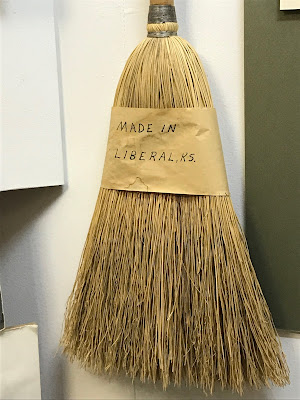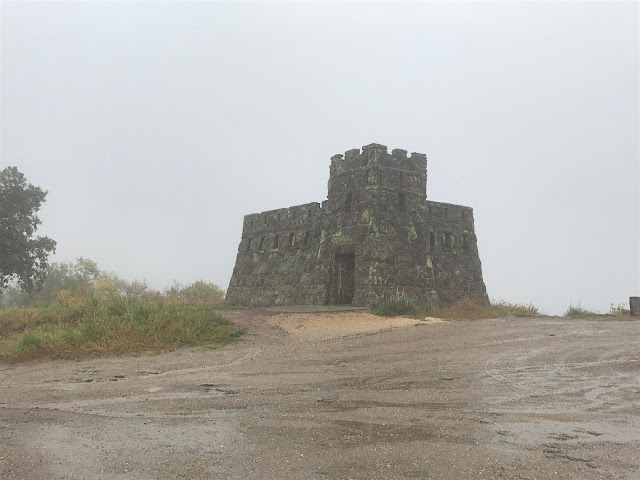Liberal is famous for several different things, among them being the title of Broomcorn Capital of the World. At least in 1905...
The local museum also boasts the only copy we've seen of a manual vacuum cleaner! That vertical handle on the far end is designed to be pushed back and forth, creating a vacuum. Well.....maybe.
Liberal's other famous landmark is Dorothy's House. A tribute to the 1939 movie set in the middle of Kansas, with the original house used in the movie, and a yellow brick road! What more could we want?
Why, a statue of Dorothy with Toto, accompanied by Donna and Sasha!
The house wasn't open for tours while we were there, so we snapped a couple of pics instead.
This was a trip-state day, having started in Kansas and dropping into the Oklahoma panhandle before ending in Texas.
Immediately, we noticed that Oklahoma doesn't look a lot different than Kansas...
Right on the Texas - Oklahoma border lies the little town of Texhoma. No big deal, but for the fact that Donna's Great Uncle Bill had a ranch here back in the day, so we began talking about the good old days....
As we crossed the border into Texas,
we began to wonder where Uncle Bill's ranch was. Just then, we saw a small sign off to the side of the road with his name on it and the name of his ranch: the Bar O. Wow! What luck! Well, sort of...
It took us roughly eight miles to find a place to pull Nessie over to the side of the road. Then we disconnected the tow car and drove back east at the posted 75 miles per hour (or a little over) to check out the sign. After a deep immersion in nostalgia, and about a hundred pictures, Donna said she remembered "The Place" very well. The ranch is now run by Uncle Bill's grandson Steve. Satisfied that the ranch is in good hands, we drove back west....hooked up the car, and continued our journey. Whew!
Another twenty miles southwest on US 54 got us to Stratford, Texas, where Uncle Bill and his wife Aunt Elsie moved after they left the ranch.
As we turned south on US 287, heading into Amarillo, we saw, again, that what they say about Texas is true. Everything's Bigger in Texas. In this case, we're talking about how flat the land is.
After a nice trip on several not-so-well-traveled roads, we find ourselves in the Oasis RV Resort just west of Amarillo. We've stayed here before, and enjoy the park very much since it has paved roads throughout and concrete parking sites for rv's. The park is large, but well laid out, and is a pleasure to stay at.
Three days ago, in Gunsmoke RV Park in Dodge City, we found that our washing machine was not working. It would seemingly get confused as it cycled. This happened last year but the problem went away after a few days. We figured to fix it if possible while we're here in Amarillo, but when we started a test cycle this afternoon, we found that the machine is working fine! Donna ran three loads through the blasted machine before it lost it's mind again. Drat!






















































